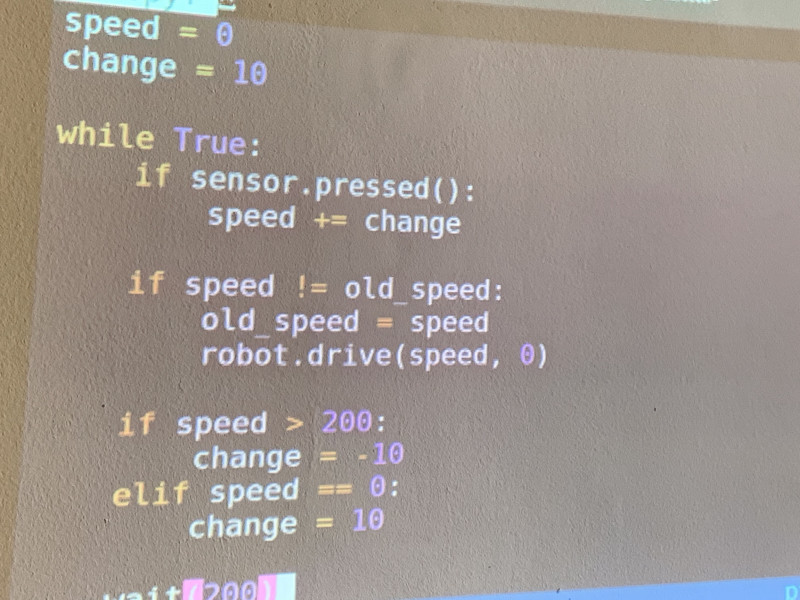22/07/2019 - Courses for Teachers
Course on Python and LEGO Mindstorm EV3. Our feedback.

 Reading time: 1.5 minutes
Reading time: 1.5 minutesLast week we experimented with the first course dedicated to teaching with Python and LEGO Mindstorm EV3. Here a short follow-up.
The 8 hours course involved a few people to allow a quiet experimentation and test the various teaching units prepared by teachers Emanuele Micheli, who dealt with the teaching part, and Lorenzo Leonardini, who is a very young programmer also expert in Python. As always at Scuola di Robotica we try to balance in our training the purely technical aspects to the educational ones, dedicated to the application of programs and built robots.
For these eight hours we have taken inspiration from the didactic materials provided by Lego Education, composing them to the didactic units developed in the European project ROBOESL (www.roboesl.eu) , a project that developed a manual for teachers dedicated to block programming. In addition, we also provided a carpet designed internally and inspired by both the FIRST (c) LEGO (c) League scenarios and the ROBOESL teaching units.
The course provided the basis for the installation of Python on EV3 allowing participants to overcome without anxiety the various installations that proceed without problems even on Windows 7 despite the fact that various manuals require WIN10 or iOS operating systems of the latest generation.Compared to other programs, it is not necessary to modify directly the firmware of the LEGO brick, but it will be enough to install Micropython on a microSD that will be inserted in the brick.
If you want to know more about this part, we signal this exhaustive link:
https://le-www-live-s.legocdn.com/sc/media/files/ev3-micropython/ev3micropythonv100-71d3f28c59a1e766e92a59ff8500818e.pdf
To take our first steps on Python, after an introduction on high level language, we moved on to programming on the EV3 brick, passing from the programming of short and famous music to the construction and programming of complex robots that simulate autonomous cars or able to draw on sheets.
The course developed along the following steps:
Film music (we made the famous five notes of Close Encounters of the third type and the initials of Stranger Things).
First steps with mobile robots: the root moves on the ground on a square trajectory.
Introduction to the use of the Ultrasonic sensor.
Using the Pliers to retrieve objects (landfill simulation).
Line Follower .
CNC Drawing Machine ( that's where we got our inspiration from: https://education.lego.com/en-us/lessons)
The reason for this course was to test from a didactic point of view the introduction of Python on easy prototyping tools such as EV3 allowing schools to extend the life of the didactic use of Mindstorm kits also to do programming with more complex languages and from the point of view of professional orientation very important, such as precisely Python.
Python is in fact the second most searched language according to estimates made by Google and updated in May 2019: https://codeburst.io/10-top-programming-languages-in-2019-for-developers-a2921798d652
This data is very significant (crossed to the data provided by Github in November 2018 where Python is the third most sought after language by developers) because it makes us understand the current trends in the use of languages by those who work every day programming.
Based on this data and on the stimulus that came directly from LEGO(c) Education that provided us with materials to produce the didactic experiments we decided to invest our time in the development of this new course.
In the future, in autumn 2019, Scuola di Robotica will also produce an online course dedicated to Python and Mindstorm EV3, so if you are interested, stay tuned!

